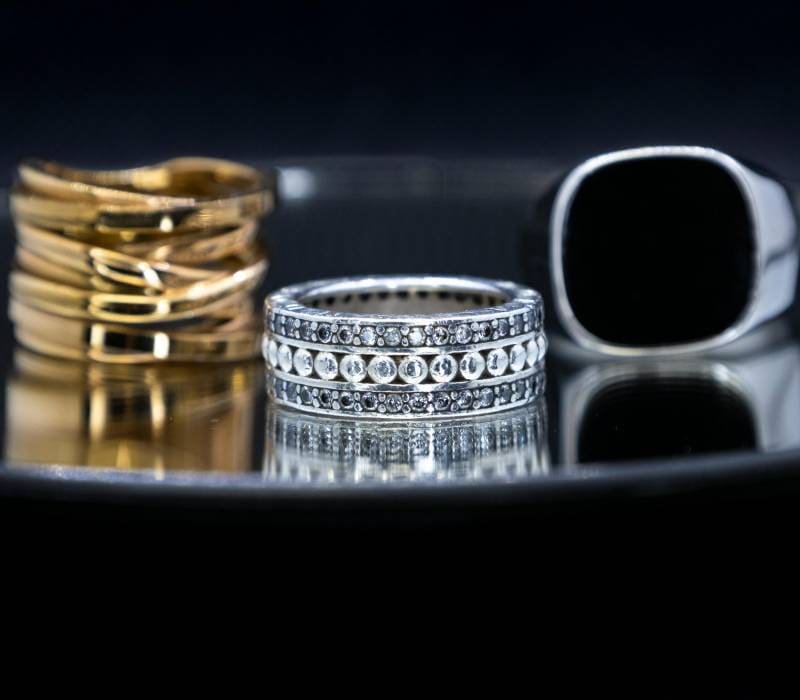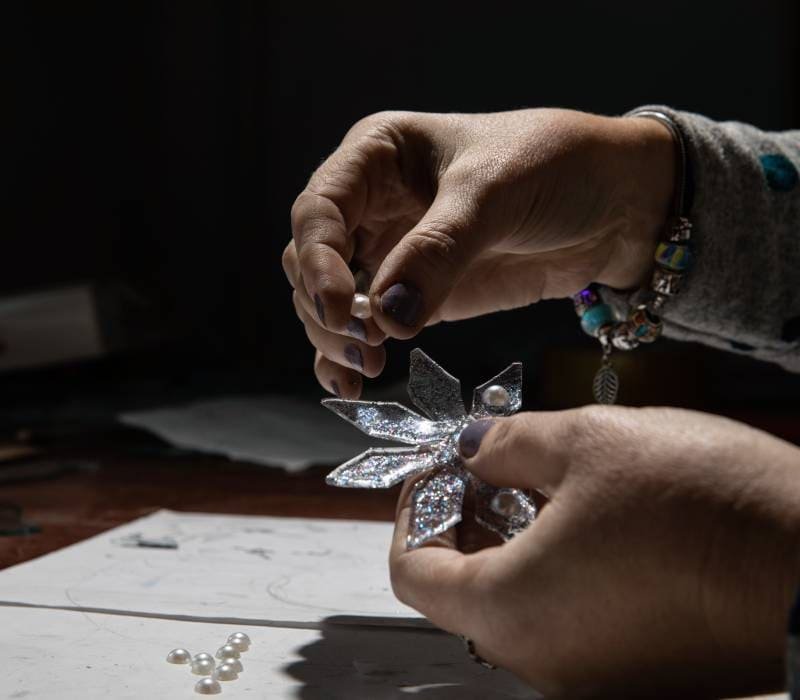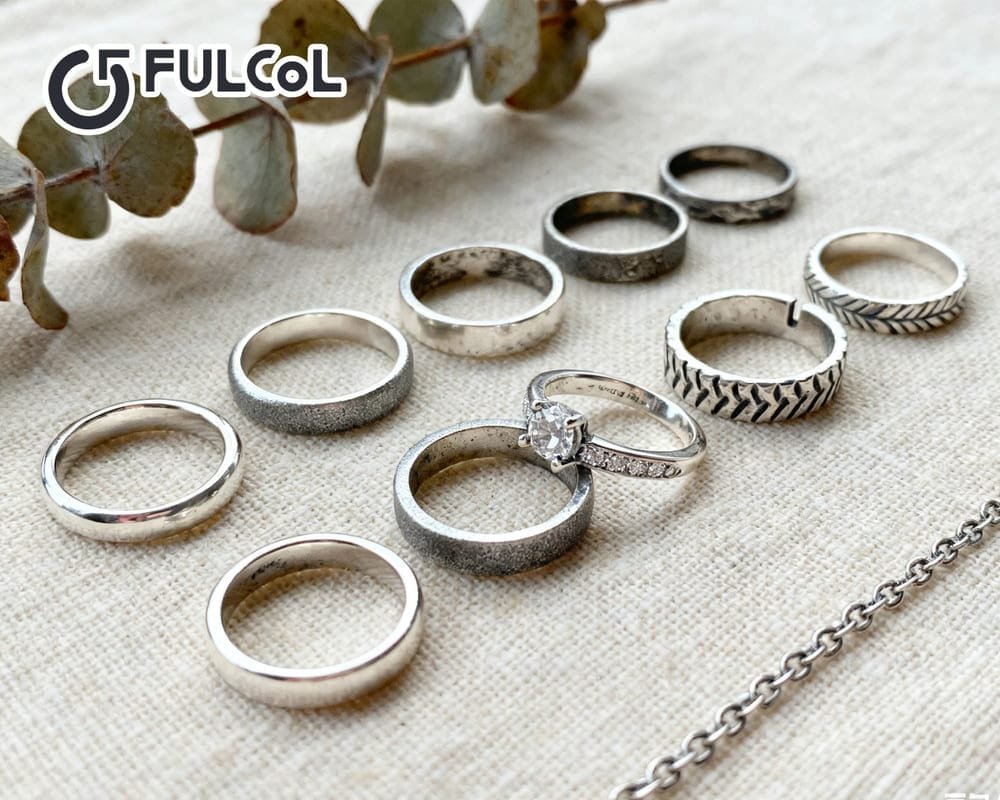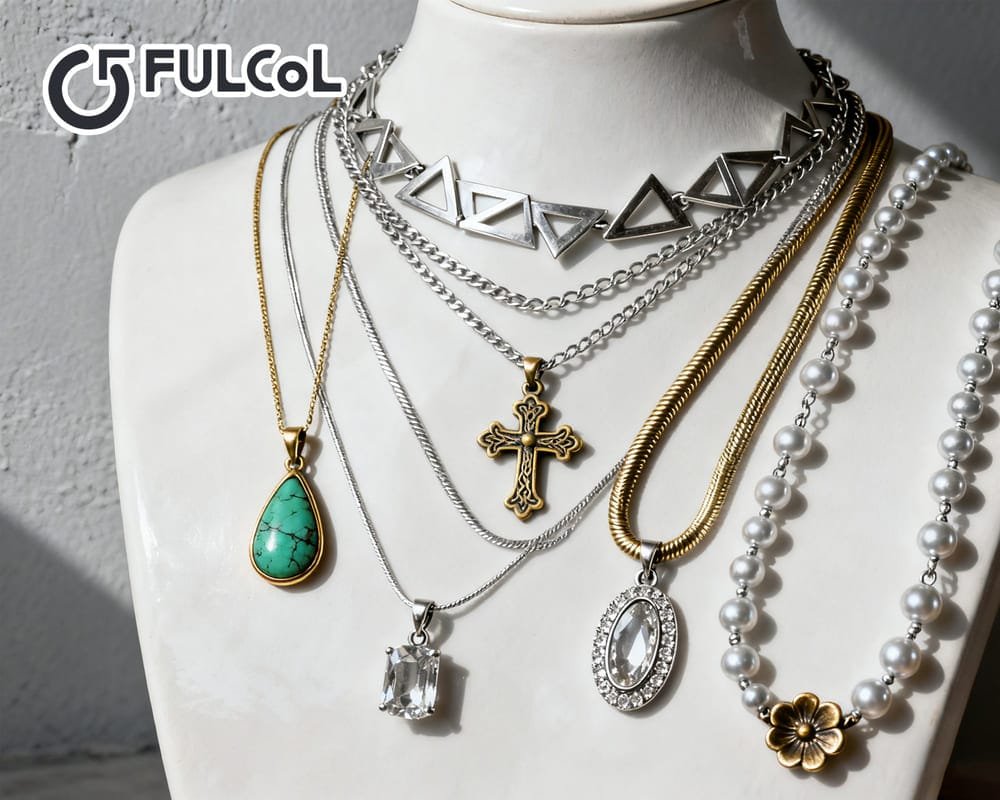In the dazzling world of custom jewelry, every piece of metal carries ingenuity and emotion, from the lines on the design to the touch of the fingertips, all of which represent the wearer’s cherishment of beautiful memories. However, the choice of metal is far more than color and luster – it is about the durability, comfort, skin compatibility of the finished product, and whether the luster will last as long as new in the years to come.
As a custom jewelry manufacturers with decades of jewelry manufacturing experience, Fulcol knows that only by thoroughly understanding the physical properties, chemical composition and process matching of various precious metals and alloys can we truly tailor-make a custom masterpiece that not only meets your aesthetic expectations but also takes into account the wearing experience.
Table of contents
- Why metal selection is crucial for custom jewelry
- Common types of custom jewelry metals and their characteristics
- How to evaluate the durability and maintenance needs of metals
- Choose the right metal according to your budget and wearing occasion
- Recommended professional tools and methods in personalized customization
- Practical operation steps: the complete process from demand to finished product
- How to extend the service life of custom jewelry
Why metal selection is crucial for custom jewelry
Visual beauty and color expression
The inherent metallic luster of precious metals can not only enhance the overall temperament of jewelry, but also create a harmonious echo with the color of gemstones. The warm tones of gold can set off warm-colored gemstones such as ruby and orange tourmaline, making the work more warm and noble. White metals (such as platinum, white gold, and sterling silver) can highlight the icy light of cold gemstones such as diamonds and sapphires.
Physical properties affect process feasibility
Parameters such as Mohs hardness, ductility, and tensile strength determine the smoothness and plasticity of metals during processing. For example, metals with higher hardness (platinum, titanium alloy, and stainless steel) can maintain higher dimensional stability in micro-diamond inlays and precision engraving, but they also require higher tool and operation precision. Pure gold and low-karat gold with good ductility are suitable for complex relief textures and streamlined curved surface designs.
Wearing experience and skin compatibility
Metal composition directly affects wearing comfort and skin compatibility. Metals such as nickel and copper are prone to allergic reactions, which is especially important for people with sensitive skin. Hypoallergenic materials such as medical-grade stainless steel, platinum, and titanium can effectively reduce the risk of skin discomfort and ensure a safe experience of long-term wear.
Durability and maintenance requirements
Different metals have different antioxidant, corrosion, and wear resistance. Platinum and stainless steel have outstanding natural anti-oxidation ability and almost no additional plating is needed; pure silver is prone to silver rust due to the copper content and needs regular polishing. High karat gold is rarer, but it is also more likely to leave marks. According to your wearing frequency and maintenance habits, choosing the right metal can significantly reduce the cost of subsequent maintenance.
Common types of custom jewelry metals and their characteristics
18K gold
18K gold is composed of 75% pure gold and 25% alloy (commonly silver, copper or palladium). It has good ductility and moderate hardness, and is suitable for complex shapes and fine patterns. Its color can achieve a variety of styles through alloy ratios:
- Yellow 18K: Traditional warm gold, suitable for classic and retro designs.
- White 18K: A white base tone is achieved through palladium or nickel alloys, and rhodium is often electroplated to enhance hardness and luster. It is suitable for modern minimalist style and diamond main stone design.
- Rose gold (red 18K): Due to the high copper content, it presents a warm rose color, giving people a romantic and soft visual experience.
925 sterling silver
925 sterling silver contains 92.5% silver, and the rest is copper and other metals to increase hardness. It has a bright and warm luster, excellent ductility and process plasticity, and is often used for hollow carving and hand-hammering crafts. However, because it is easy to oxidize and produce “silver rust”, it needs to be regularly maintained with professional polishing cloth and silver water to maintain long-lasting smoothness.
Platinum (PT950)
The purity of platinum is usually as high as 95% (such as PT950), with a rare white luster and excellent anti-oxidation and scratch resistance. Its naturally formed fine scratches can form a unique “mirror frosted” effect without the need for additional electroplating. Platinum has a high density and a heavy texture, and is often used in meaningful custom scenes such as engagement rings and heirloom jewelry.
Stainless steel (316L medical grade)
Stainless steel is an alloy containing multiple elements such as iron, chromium, and nickel. 316L medical grade stainless steel has excellent corrosion resistance and hypoallergenic properties due to its strict smelting process and low nickel content. It is often used in simple and tough styles for both men and women in modern jewelry, and almost no post-maintenance is required, which is suitable for active and sporty styles.
Titanium
Titanium has a very high strength-to-weight ratio, excellent corrosion resistance and hypoallergenic properties. Its gray-blue hue is unique and avant-garde, and it can present a variety of colors through anodizing technology. Titanium is difficult to process, so it is often processed by CNC or laser engraving, which is suitable for the pursuit of technological sense and personalized customization needs.

How to evaluate the durability and maintenance needs of metals
Hardness and scratch resistance
Mohs hardness comparison:
- Titanium: about 6
- Stainless steel: about 5–5.5
- Platinum: about 4–4.5
- 14K gold: about 3.5–4
- 18K gold and sterling silver: about 2.5–3
Alloy optimization: By adjusting the alloy composition (such as increasing the proportion of silver or copper), the hardness of the metal can be increased while maintaining the gloss, enhancing the scratch resistance.
Anti-oxidation and anti-corrosion
Natural oxidation resistance: Platinum and titanium are extremely difficult to oxidize and do not require additional electroplating; sterling silver and ordinary gold alloys require polishing and storage environment management.
Maintenance cycle: It is recommended that silver jewelry be lightly polished every 1–2 months; platinum and titanium only need to be checked once a year for inlay firmness.
Professional tools: Ultrasonic cleaners can deeply clean complex inlays, while anti-oxidation bags and vacuum sealed boxes can effectively isolate air and delay oxidation when not worn.
Skin compatibility
Allergen screening: Nickel and copper are common allergenic metals. EU standards strictly limit the amount of nickel released to reduce sensitivity problems. About 10-15% of adults are allergic to nickel to varying degrees, so special attention should be paid to the composition of jewelry.
Hypoallergenic material recommendation: Medical-grade stainless steel, titanium alloy and high-purity platinum have almost zero allergy risk. If you are allergic to silver, you can choose to electroplate the silver appearance on the surface of other hypoallergenic alloys.
Choose the right metal according to your budget and wearing occasion
Light luxury daily vs. heritage collection
Light luxury daily: 925 sterling silver, 14K gold, stainless steel and titanium metal, taking into account both cost and texture, suitable for multiple styles of stacking and daily mix and match.
Heritage collection: Platinum, 18K gold (especially white gold or rose gold), more value-preserving and handed down, suitable as wedding rings, medals and other eternal commemorations.
Daily wear needs
Frequent wear: Choose materials with high hardness and good oxidation resistance (titanium, stainless steel, platinum) to reduce daily scratches and maintenance work.
Special occasions: You can choose alloys with soft luster and good ductility (18K gold, sterling silver), combined with fine inlay and carving, to show luxury and ritual.
Investment and appreciation considerations
Precious metal value preservation: Platinum and high karat gold often appreciate steadily with market fluctuations; although sterling silver and alloys have small value fluctuations, they are more suitable for popular models and young people.
Circular economy: Stainless steel and titanium are 100% recyclable and reusable, which is in line with the current concept of environmental protection and sustainable development.

Recommended professional tools and methods in personalized customization
Laser engraving and micro-inlay
Laser engraving can complete text and pattern engraving at micron-level precision to ensure permanent clarity; micro-inlay technology, with the assistance of a microscope, accurately arranges micro-diamonds to create a star-like shining effect.
CAD design and 3D printing
3D modeling can be performed through CAD software (such as Rhino, Matrix), which can preview the light and shadow and size ratio in real time; then use high-precision resin 3D printing models for trial wearing, timely adjustment, and reduce rework.
XRF alloy composition detection
Using X-ray fluorescence spectrum analysis technology, metal purity and alloy ratio can be detected without destroying the actual object, ensuring that each finished product meets PT950, 18K, 925 and other standards.
Practical operation steps: the complete process from demand to finished product
Initial demand communication
- Communicate with professional consultants online or offline about design concepts, budget ranges and wearing scenarios.
- Provide multiple styles and metal suggestions based on your story and personality.
Material sample comparison
- Provide a variety of metal samples (18K, sterling silver, platinum, titanium, stainless steel) to intuitively experience the color, weight and touch.
- For people with allergies, perform skin patch tests to ensure safe wearing.
Design and proofing confirmation
- The designer will issue a CAD rendering and provide a 3D printed prototype for you to try on.
- Adjust the size, thickness, and gem setting method based on feedback.
Precision casting and hand polishing
- Use precision wax casting to restore the design details to the maximum extent.
- Experienced craftsmen perform hand polishing and polishing to ensure a smooth and flawless surface.
Quality inspection and delivery
- Pass XRF alloy composition detection, magnifying glass process inspection and jewelry durability test.
- A professional maintenance manual and care kit are included, and regular polishing or plating services are provided.

How to extend the service life of custom jewelry
Reasonable wearing: Avoid strenuous exercise, bathing or housework when wearing jewelry.
Professional cleaning: Send platinum and gold jewelry to a professional institution for ultrasonic deep cleaning every 6 months, and silver jewelry can be wiped by yourself with a silver cloth every 1-2 months.
Correct storage: Place a single piece of jewelry in an anti-oxidation bag, or wrap it in a soft cloth and place it in a sealed box to avoid metal collision and air contact.
Avoid chemicals: Stay away from perfumes, detergents, bleaches and other chemicals to avoid accelerating metal surface oxidation or plating shedding.
Regular inspection: Regularly check the inlay firmness and connectors, and send them for repair in time if they are loose or deformed.
| Start Your Custom Order | Email: info@fulcol.com | Number: +86 13055603907 |
Only by choosing the right metal can customized jewelry achieve a perfect balance between heritage significance and wearing experience. Through in-depth analysis of metal characteristics, craftsmanship methods and practical procedures, you have the core elements of professional judgment. Whether it is a platinum wedding ring that pursues the ultimate texture, or a light and fashionable sterling silver bracelet, as long as you combine your own needs and budget, you can create a unique work that is both aesthetic and practical. Now, join hands with Fulcol’s professional custom jewelry supplier team to let every bit of metal give eternal light to your exclusive story.






